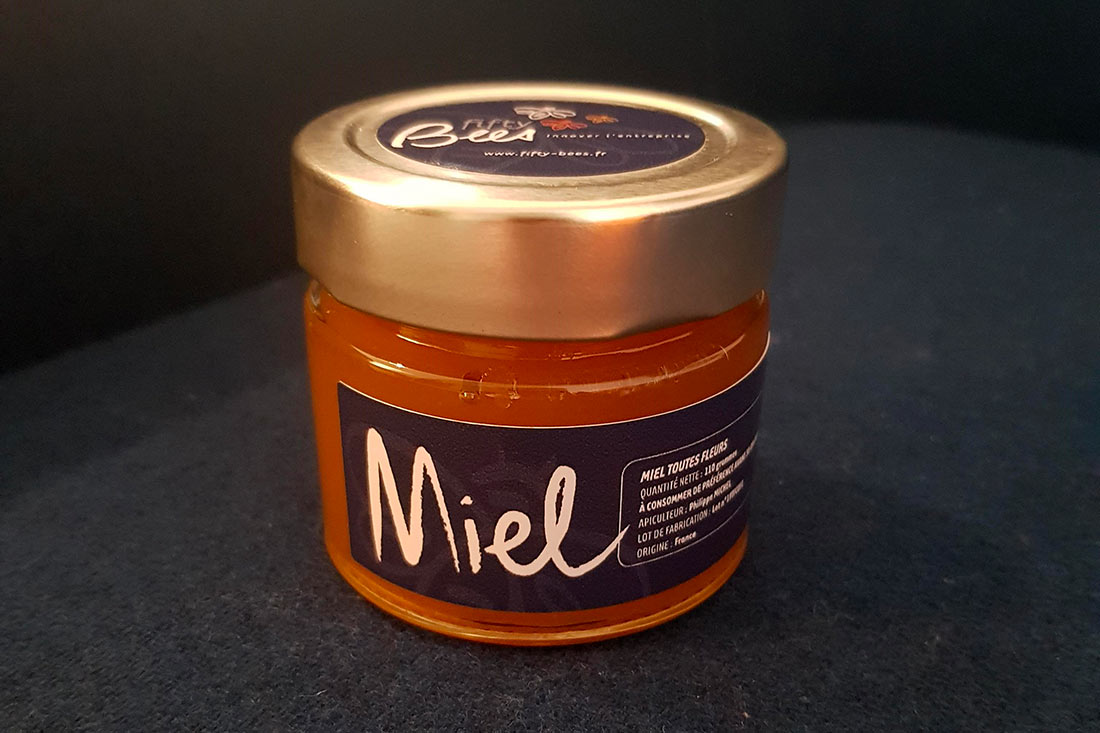09 Mar 50 Kilos for 50 Bees!

50 kilos of honey! This is the quantity our beekeeper collected this year from the three hives which prosper on Fifty Bees roof top…
A very nice performance considering the climat which clearly affected the production of our bees ! The rainy Spring didn’t enable a proper developement of the colonies and the summer heatwave weakened them.
Producing one kilo of honey is a Herculean task for these insects : in order to make 1 kg of honey, a foraging bee must be working for 200 days, travel 40 000 km (the Earth’s circumference) and forage about 800 000 flowers!
Fortunately, a hive is a society just as well organized as a big firm…
Around the queen, whose sole job is to lay over and over (2000 eggs a day in Spring), up to 50 000 worker bees work ruthlessly while a few hundred drones lounge – when they don’t fertilize the queen!
The bees, during their short life (30 to 45 days in Spring and Summer), will perform up to seven different jobs : cleaner, nurse, architect, handler, ventilator, sentinel and forager. Great example of versatility to match the company needs…
Once the bees are done with their work, comes the beekeeper who takes the leads to devote his time to the difficult exercise of collecting honey. After having slightly smoked the hives, he collects only the « supers » (upper part of the hive) installed at Spring and leave the rest (body of the hive) to the bees in order for them to have enough supplies to feed themselves, raise the bee larvas and make it through the winter. In fine, the beekeeper removes only 20% of the production of the bees – some sort of VAT, infact.
Once the compartment detached, it is set up sideways and swept away with a leaf blower to move the bees located in the « super » towards the body of the hive, without hurting them.
The beekeeper must make sure that the queen is not located in the supers since, her unique task consisting in laying, she wouldn’t be able to find her way back to the hive, as close as it may be!
You can easily spot the queen as she is 5 mm bigger than the worker bees… However, it may occur that the queen gets swept away along with her colleagues. If the beekeeper doesn’t manage to put her back in the hive, it becomes quite a mess : the worker bees start raising up their abdomens and wings to emit pheromones to call the other bees to come back and report the problem.
A cluster of bees gathers around the quuen in order to not leave her alone and leave the hive. This is called swarming. (In Nature, swarming happens only when a hive is over-crowded). The worker bees of the orphan hive will then start over raising 6 to 7 eggs which, once turned to larvas, will be exclusively fed with royal jelly in order to form a new queen – Among bees, food defines the caste.
The supers are then taken to the honey house in order to uncap the frames. In other words, the wax caps which insulated the honey, avoiding desydratation, of the nectar and stopping mushrooms and fermentation are being removed with a knife. Then, each frame is placed in an extractor which enables, thanks to centrifugal force, to empty its content. The ejected honey is afterwards filtered in a rotating tub.
All that remains is to put the honey into jars!
430 tailor made jars this year which we were thrilled to offer the entrepreneurs we support every year in their business adventures…
(Big Up to Philippe Michel for his talent as a beekeeper and his explanations as documented as clear!)

